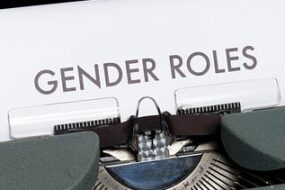Essay examples are important guides to learners in all disciplines.
They provide key information on areas such as structure, approach, and formatting.
This is accurate for critical analysis essays.
Planning to write a critical analysis essay?
Do you need an example of a critical analysis essay?
Why an essay example?
Accordingly, a critical analysis essay example just like critical reflection essay examples, process analysis essay examples, or a 500 words essay example is an effective tool in essay writing.
Going through the example helps understand the parts of an essay as well as the different steps to essay writing.
Critical Analysis Essay
Before you go through the critical analysis essay sample, it is important to understand what a critical analysis essay entails.
So, what is a critical analysis essay?
What does it entail?
A critical analysis essay can be defined as:
Note that there is a wide variety of material that can be analyzed.
Areas of Critical Analysis
There are various points you could seek to focus on in your critical analysis assignment.
This is whether you are working on a book or an article.
As illustrated in a good example of a critical analysis essay, the idea is to criticize the argument that is being presented by the author.
Critical analysis should therefore focus on the persuasiveness of the argument.
Doing this would require you to pay attention to the below areas:
1. Evidence questions
Evidence questions critically analyzes the evidence presented by the author.
They ask questions such on:
- Whether the evidence presented by the author supports the argument made.
-Whether there is sufficient specific evidence to support the more general claim.
- Whether the author ignores or diminishes evidence that contradict their argument.
- Whether the evidence is credible.
-Whether bias can be identified in the evidence.
2. Theoretical questions
As reflected in an excellent example of a critical analysis essay, these questions seek to scrutinize whether the author understands the situation.
They focus on areas such as:
- The author’s theoretical background
- How the background influences the author’s view.
3. Policy relevance questions
These questions focus on the implications of the author’s argument.
They seek answers on areas such as:
- Whether the implications are positive or negative.
- How the author dealt with the issues.
Critical Analysis Essay Structure
As illustrated by a good example of a critical analysis essay, structure includes four main parts:
They are as described below.
I. Introduction
A critical analysis introduction should
- Identify the work being critically analyzed
- Present the thesis
- Provide a roadmap
II. A short summary of the work
Should:
- Provide a short summary of the work to lay a foundation for the argument
III. The argument
It should
- Include numerous sub-arguments
- Have supporting evidence
- Be aligned to the thesis
- Be the main part of the critical analysis essay
IV. Conclusion
It should:
- Reflect on your argument and its support
- Highlight the importance of the argument
- End with a clincher
Example of a Critical Analysis Essay
Paul Farhi in the article “How biased are the media, really” dated April 27, 2012 posits that a new perspective about slanted journalism has emerged, consequently compounding the definition and identification of media bias. The advent of new media platforms has created differing opinions about partial reporting. To most, views about media bias have been inflated, and the idea that media has become more partisan is a misconstruction. It has been argued that people’s opinions suggesting that media has become more skewed in spheres such as politics, political parties, and ideologies is misinformed. Despite a strong attempt to dismiss the heightened levels of media bias, the article cites unprecedented bigoted conduct in media reporting. It is evident that the media has over time become less objective and more one-sided.
The article opines that the belief that media bias is prevalent in the society has made Americans lose confidence in the mainstream media. As a result, people have come to trust and rely on a few media outlets, which in most cases reinforce and reflect their viewpoints and interests. Paul observes that people believe that media bias is the main cause of the severe split between the conservatives and the liberals. He however believes that media bias has not been amplified. Instead, he argues that there are numerous reasons and mechanisms that act as checks against media bias. He uses survey data and contrasting reality examples to support the claim that perceptions on increase in media bias are wrong.
However, increase in media bias is evident in political and ideological inclinations, particularly during the electioneering period. Media houses have taken stands on politics matters, with some if not most, assuming a partisan position when it comes to political parties and ideologies. As Paul rightly observes, media has been divided into either the conservative or liberal factions, with biases permeating media sources targeting a specific audience. For instance, most TV stations broadcast content that reflect the political and ideological views either conservative or liberal audiences. Paul notes that biases among media sources have resulted into outlets such as Washington Times and the Drudge Report being considered as conservative and Wall Street Journal and New York Times as liberal. Media bias in many outlets is advanced through strategies such as omission in coverage, story selection, selection of sources, sharing of sources, and highlighting specific eye-catching words. Based on the political discourses they participate in, it is possible to categorize media sources as either conservative or liberal.
As well, the growth of numerous agencies and mechanisms designed to curb media bias can be used as evidence to support the argument that there has been a growing trend in the lack of objectivity among media outlets. Paul contends that the presence of institutions such as watchdog groups like AIM and FAIR, and other programs like Colbert Report and Daily Show help mitigate against media bias. However, a counterargument can be made that the presence of the numerous checks reflects the existence of a growing problem. This is particularly so since media is largely governed through self-regulation, with media houses being expected to apply provided controls and standards. Further, Paul notes that there has been need for individuals to continuously write critiques on media biases as a way of regulating media biasness. This points to a deteriorating scenario. The need for and presence of these checks indicate increasing bias among media houses.
The article “How biased are the media, really” reflects the complexity of media bias in the American society. Although surveys and optimistic analysis of the media landscape may indicate otherwise, media bias among different houses has been on the rise. It is possible to divide media houses as either conservative or liberal based on the kind of content they broadcast. As well, the rising number of agencies and programs designed as media bias checks reflects a growing problem. Despite all the effort made in the article to diminish the extent of media bias in the American society, inclinations on political parties and ideologies indicate otherwise. There is need to acknowledge the problem for all the stakeholder to start the journey of devising long-term solutions.
Works Cited
Farhi Paul. “How biased are the media, really?” The Washington Post, https://www.washingtonpost.com/lifestyle/style/how-biased-is-the-media-really/2012/04/27/gIQA9jYLmT_story.html









